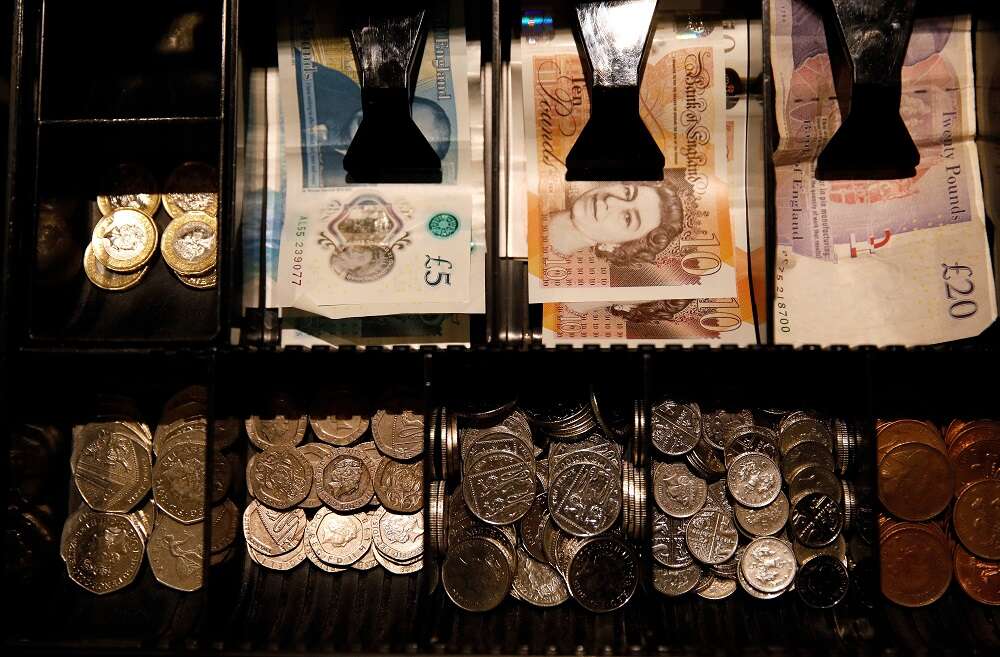
LONDON (Reuters) -Sterling briefly fell to its lowest level since early 2021 against a robust euro on Monday, while news that Britain’s economy grew less than expected in July highlighted a weak growth outlook.
A broad pullback in the dollar meant there was some respite for a battered pound, which rallied over 1% to $1.1705 — its highest in almost two weeks and up from a 37-year low hit last week at $1.1407.
Sterling also managed to claw back some ground against the euro, having fallen to its lowest levels since early 2021 at around 87.215 pence earlier on as the euro benefited from hawkish European Central Bank commentary the over the weekend.
But by late Monday trade, sterling was trading at 86.60 pence per euro, a touch firmer on the day <EURGBP=D3>.
Data on Monday highlighted that the UK economy is showing signs of strain from surging prices. Britain’s gross domestic product grew by 0.2% in July from a month earlier, versus economist expectations for growth of 0.4%.
“The adjustment for the June bank holiday makes the figures a little difficult to read and we think the Bank of England (BoE) will take more notice of tomorrow’s August jobs data for insight into how tight the UK labour market really is,” said Chris Turner, global head of markets at ING.
“All in, we expect the BoE to hike 50 bps again when it decides policy rates on 22 September.”
The BoE, which was scheduled to meet this Thursday, has postponed its rate decision by a week following the death of Queen Elizabeth.
It forecasts Britain to slip into a recession at the end of 2022 and not come out of it until early 2024, due in large part to the hit to living standards from the energy price surge.
That bleak outlook has helped drive sterling down in recent weeks.
ING’s Turner said the pound could probably get back down to the recent lows seen against the dollar in the $1.14 area.
Markets were also digesting the implications of last week’s announcement by new British Prime Minister Liz Truss on capping soaring consumer energy bills for two years, with measures likely to cost the country upwards of 100 billion pounds ($115 billion).
“Perhaps markets are seeing the package as supportive for the pound,” MUFG analyst Derek Halpenny said. “Europe is moving in the same direction,” he added referring to measures to ease the impact of the energy crisis.
Sterling’s rally against the dollar on Monday meant the British currency was set for its first straight two-day gain since late July.
(Reporting by Dhara Ranasinghe; Editing by Ana Nicolaci da Costa and Toby Chopra)


